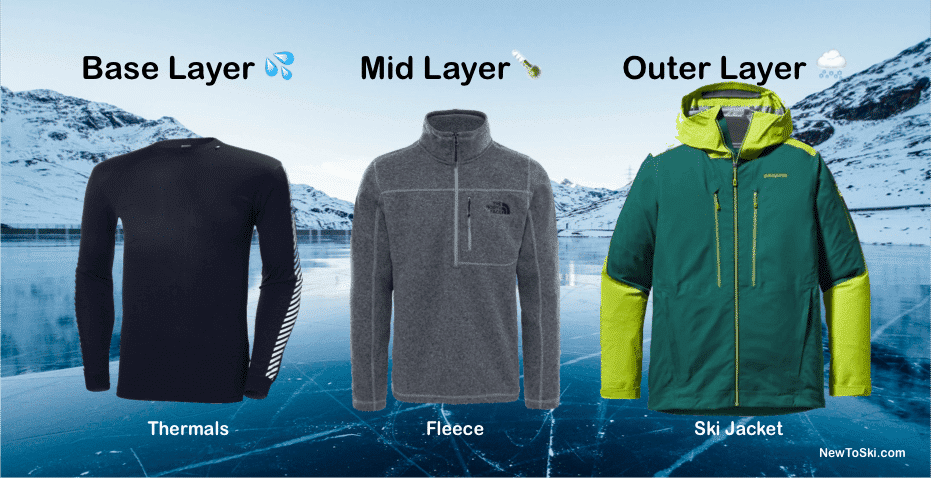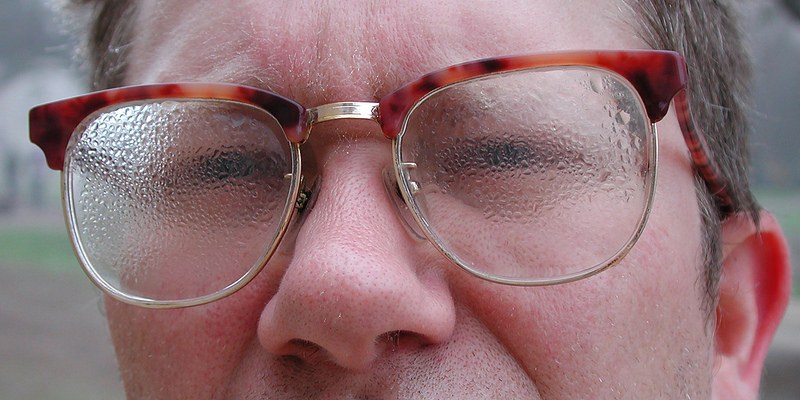Best Anti-Fog Ski Goggles
Fed up with goggles that fog up and ruin your run as you carve down the mountain? So you should be. Skiing and snowboarding are high-action fast-paced and require crystal clear clarity so you can see and react to the terrain.
If you can't see properly against the glare of the sun, the dazzle of the snow, and mist condensing on your lens - then your ability to ski safely at speed is massively impaired. Not good for you or anyone in your vicinity.

We are reader supported. We may collect a share of sales from the links on this page. As an Amazon Associate, we earn from qualifying purchases.
The best anti-fog ski goggles are larger, have excellent ventilation to circulate fresh air, and are coated with the latest anti-fog technology. Find a crystal clear lens with these three features in perfect harmony and you'll stay fog-free all day.
Luckily for you, I've done the hard work and after many hours of research, I've reviewed the absolute best fog-free ski goggles that you can buy this season.
Our Lineup of the Best Anti-Fog Ski Goggles
- Best Wide Vision: Oakley AIRBRAKE MTB Goggle
- Best Contrast: Oakley Flight Deck XM Snow Goggle
- Best Lens Tech: Smith I/O MAG XL Snow Goggles
- Best All Round: Anon Men's M4 Cylindrical Goggle
- Best Fit: Giro Axis Goggles
1. Oakley AIRBRAKE MTB
Awesome Features Worth Mentioning:
- Prizm® technology for sharp contrast and crystal clear detail
- 12 lens tint options for sharp vision across a range of light conditions
- Dual-vented lens for maximum ventilation which limits the water vapor from condensing
- Comes with x2 lenses: Prizm HI Pink bonus lens
Downsides:
- Not all lenses are in stock (at the time of writing)
2. Oakley Flight Deck
The Oakley Flight Deck Goggles are high-tech spherical goggles with crystal-clear lenses. Making use of the latest in Oakley Prizm technology these goggles deliver epic contrast and lightwave filtering to pick out the details in bright glare and flat light whiteouts.
Awesome Features Worth Mentioning:
- Spherical lenses with all-direction vision
- The latest in Prizm® technology
- Lenses are interchangeable
- Compatible for skiers who wear spectacles
- Face foam wicks away sweat and is very comfortable to wear
Downsides:
- Not cheap!
- Maybe too large for smaller faces. See the Asian fit version.
3. Smith I/O MAG XL Snow Goggles
Awesome Features Worth Mentioning:
- One of the standout features of the Smith I/O MAG XL goggles is the magnetic lens change system. This system uses strong magnets to secure the lens to the frame, allowing for quick and effortless lens changes.
- Smith's ChromaPop lens technology enhances color and contrast, providing exceptional clarity and visibility in various lighting conditions.
- The Smith I/O MAG XL goggles feature a large spherical lens design that offers an expansive field of view.
Downsides:
- Pricey!
P.S. If you're interested in seeing my top picks for lenses that automatically change the amount of light they let in and work amazingly in the sun and the shade, check out my review of the best Photochromic ski goggles.
4. Anon Men's M4 Cylindrical
This is a high-tech ski goggle packed with fog-busting features from its powerful vents to the magnetic mask attachment (which prevents your neck warmer from falling down and getting moisture trapped inside your goggles).
The lens has a short radius for a more natural fit. The lenses are interchangeable and are easily swapped out using magnetic strips in a few seconds. What I love about the Anon M4 is that you get two lenses as standard without paying extra - which means you are good to go and ride in all weather from low light to bright bluebird days.
Awesome Features Worth Mentioning:
- Sonar lens by ZEISS for epic contrast so you can see upcoming bumps and dips in the snow
- Magna Tech quick interchangeable lenses
- Wide-angle wall-to-wall vision
- MFI technology for a seamless fit with the Anon facemask
- x2 Lenses come as standard. Low light and bluebird skiing
Downsides:
- Expensive.
- Large retrofit is not for every face shape.
5. Giro Axis Goggles
Awesome Features Worth Mentioning:
- Giro Axis goggles feature Expansion View Technology (EXV), which provides an exceptionally wide field of view.
- Giro Axis goggles come with a user-friendly magnetic lens interchange system.
- Giro's Axis goggles often feature VIVID lens technology. These lenses are designed to enhance contrast and visual clarity while reducing eye fatigue.
Downsides:
- Giro Axis Goggles are generally considered mid to high-range in terms of pricing.
- While Giro Axis Goggles often come with high-quality lenses, the availability of replacement or alternative lenses can be somewhat limited compared to more popular goggles brands.
- Like many ski and snowboard goggles, the Giro Axis goggles may not be the most comfortable option for individuals who wear prescription glasses.
Best Google for Night-skiing
Typically most ski goggles you would wear in the daytime will be too dark for night skiing. Depending on the conditions you'll want to get a clear pair of goggles for night skiing. The higher the VLT rating the better - which means they'll let in more light, allowing you to see the trail as you cruise down at midnight. Googles are still essential at night time, as they'll protect your face from the harsh cold, the glare of the spotlights, and fresh powder flicking in your face.
How To Stop Goggles Fogging Up

The first step to preventing goggle fog is to invest in a quality pair of goggles that deliver. The key things to look for are ventilation and an anti-fog coating that truly works. Respected brands like Smith Optics and Oakley are more expensive but they do a much better job of preventing fog from condensing in the first place.
Some cheaper lenses do a good job, but most bargain lenses are pretty poor when it comes to preventing fog and are much more likely to get foggy in the wrong conditions. Once you've got yourself a nice pair of anti-fog goggles (you've got a nice selection of the best above!) there are a few key things to know about that will lessen your chances of ever seeing fog again.
1. Shake Off Snow
If it's snowing or you take a face plant, snow can accumulate on your vents and block the circulation of air. When this happens, the air inside your goggles heats up and when it comes into contact with the cold lens surface is more likely to fog up.
So every couple of runs, shake your goggles by moving your head from side to side or taking them off and giving them a shake. You only need to do this if it's snowing or you think there is snow on them. Resist the temptation to wipe your lenses with your fingers or gloves (more on that next).
2. Don't Wipe Your Lenses
Wiping your lenses with your fingers or glove to clear away snow or moisture is a bad idea. Not only will it likely smear the snow and make it worse, but it will also leave a fingerprint, dirt, or in a worst-case scenario (tough gloves) a small scratch. Fingerprints attract dirt and water is more likely to condense around these imperfections on the lens - so avoid touching the lens part of your goggles directly on the inside or the outside.
If you do accidentally touch it, then grab your soft wipe cloth (it's in your pocket right? ) and give your goggles a cleanup. Use the soft cloth that comes with it or any soft cloth that you might have with your spectacles. The soft material will clean the surface without scratching the lens.
Tip: Avoid using anti-fog sprays or cleaning fluids on your lenses as these are very likely to destroy the existing anti-fog coating and can ruin a good pair of lenses. Because different anti-fog coatings are made in different ways by the manufacturers, if they are exposed to certain chemicals then it will break down the coating and either ruin the lens or make it much more susceptible to fogging.
3. Don't Get Sweaty
Getting too hot under the collar will make your goggles more prone to fogging. That's because excess heat that comes up and out from your jacket and up through your neck warmer will find its way to your goggles or be emitted from your face. This excess heat will make it warmer and more humid inside your goggles and so is more likely to contain water vapor that will condense in contact with the cold lens.
If you're hot and sweaty, your goggles are more likely to fog up - this is more the case the colder it is outside and the warmer your core. The greater the difference in temperature the more chance there is of water vapor condensing as fog.
Take off your mid-layer, undo a few buttons, and get that air circulating. Getting too hot and sweaty will dehydrate you faster and also weigh you down as sweat accumulates in your clothing or base layers. The trick to regulating your temperature is not to wear more than three layers.

P.S. I wrote a whole guide to layer for skiing.
4. Keep Your Goggles Off Your Forehead
If you're skiing without a helmet and put your goggles onto your beanie or forehead then your goggles may start to fog up as the heat from your hat or forehead will feed into space. If this is a problem for you, then store your goggles in your jacket pocket inside the soft cloth bag.
Although it's warmer inside your jacket, both the inside and the outside of the lens is warmer and so it won't fog up. Because of this putting your goggles in your jacket for a few minutes is a good way to de-fog a pair of fogged-up goggles.
P.S. Go check out the original guide on preventing goggle fog.
Skiing With Glasses? How To Prevent Fogging
Wearing glasses beneath your goggles presents another set of problems. Not only do you have more lenses to deal with but there is also less space for the air to circulate.
The key is to wear larger OTG 'over the glasses goggles that have channels cut into the foam or frame that makes it more comfortable to wear your glasses and have more space so that the air can circulate.

Another common problem is wearing a neck warmer or balaclava too tucked up inside your goggles. The materials trap the air from your mouth and nostrils and bring humid air into your goggles - making them more likely to fog up.
Another option to reduce fogging is to either wear prescription inserts or contact lenses which have their pros and cons.
P.S. If you're interested I wrote an in-depth guide to skiing with glasses and I reviewed the best OTG goggles here.

Final Thoughts
Preventing fogging is part science, part practice. Once you know the mechanism behind goggle fogging it becomes much easier to understand how to prevent and stop it from occurring. Buying the right pair of goggles is the most important step and not overheating and breathing moisture into your frames is the next crucial step.
Stay fog-free, enjoy the ride, and have fun.










